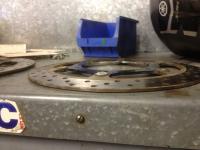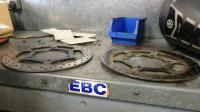06fjrrider
Member
I have looked through the post and couldn't find anything on the issue i have an 06 fjr 1300a last week i put brand new tires on and realised the front pads were wore i ordered them rode for a week with no issues then i installed all new pads ever since my front brakes have been hanging real bad and the rear pedal is spongy i have bleed three times and have had no luck getting them to free up question is where should i start trying to fix this issue?






